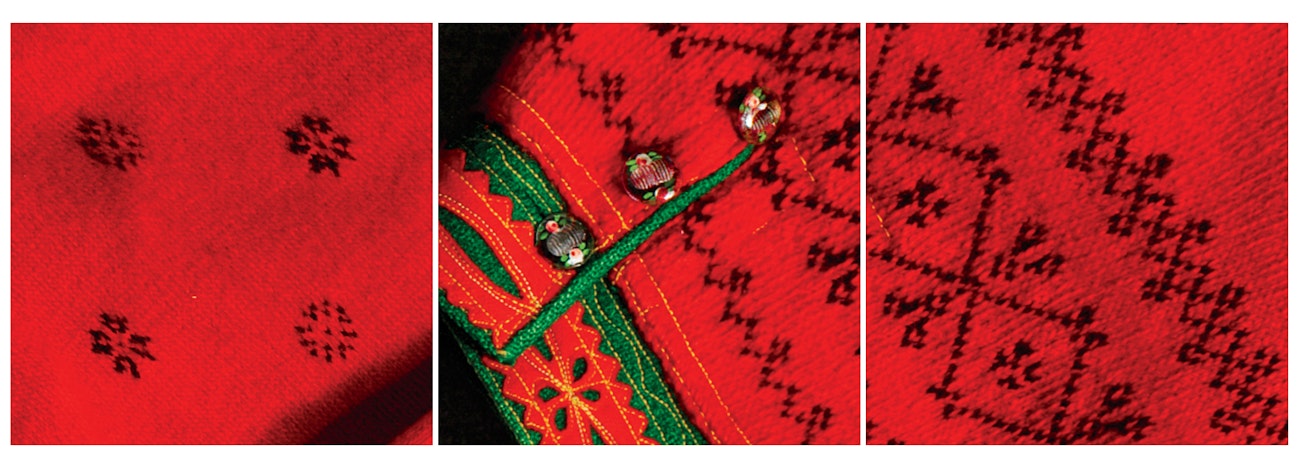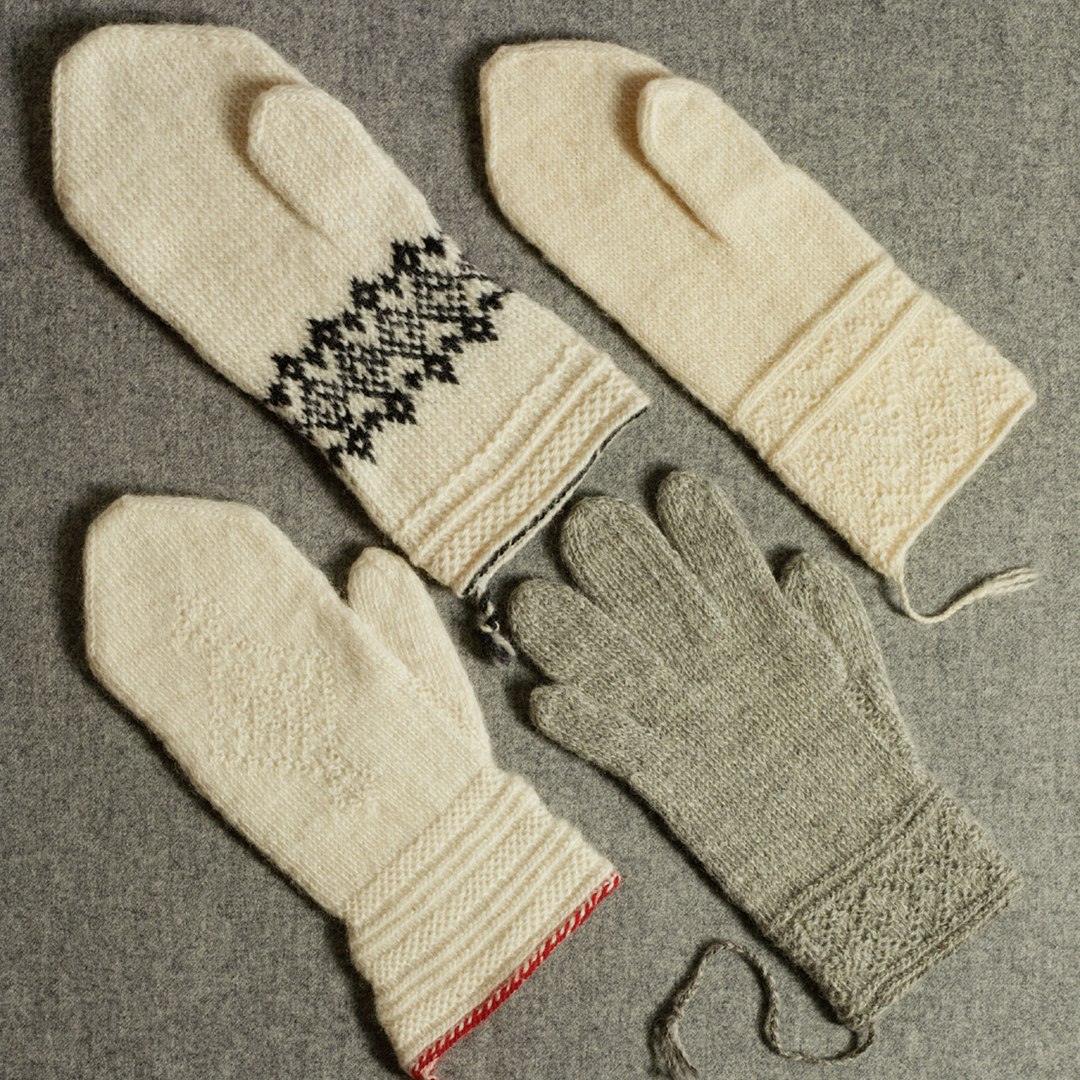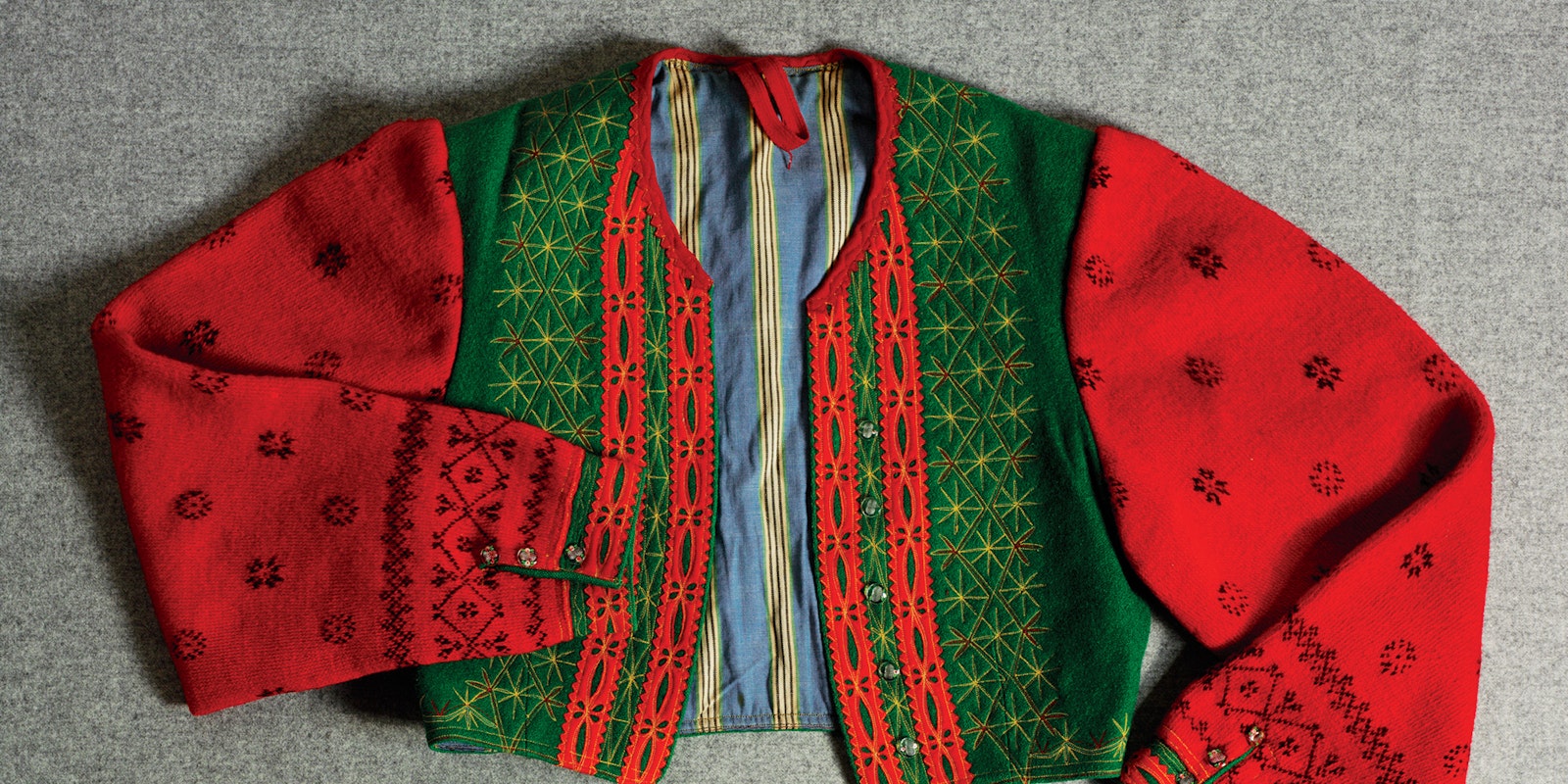A twenty-first-century traveler to Sweden’s urban areas is presented with a blend of modern glass and steel buildings, fast cars, and exotic cuisine from around the world. Travelers who venture into the countryside see a more traditional life of grazing sheep, birch woods, red-and-white farmhouses, and Midsummer poles left decorated throughout the year with leaves and flowers as a memory of summer past and a promise of one to come.
The traditional knitting technique of tvåändsstickning (two-end knitting, also called twined knitting) has been practiced since at least the middle of the seventeenth century in Dalarna and other rural provinces where there was a need for functional, warm winter clothing. The resulting fabric, in fact, is perfect for the Scandinavian climate—it is dense, warm, sturdy, somewhat waterproof, and doesn’t lose its shape when wet.

Details of the waistcoat’s sleeves.
Two-end knitting was once the sole method of knitting in the forested areas of Sweden and neighboring Norway. Toward the end of the nineteenth century, however, the Swedish school system began teaching knitting skills using the left-hand-carry method (also called continental or “picking”). Children who had learned to knit at home using the widely practiced right-hand-carry method (also called English or “throwing”) found the new technique difficult to master—some switched back to the old method as soon as no one was looking. As a result of the adoption of the new technique, the skill of two-end knitting was nearly lost. It took the discovery of an ancient glove in a slag heap during a 1974 archeological investigation in the mining town of Falun in Dalarna to rekindle interest outside rural Sweden in the technique and the garments made with it.
Examination of the glove, knitted in a fine wool yarn, indicated that the fabric differed from that produced by other textile techniques, including ordinary knitting and nålbinding. At the Nordiska Museum [Nordic Museum] in Stockholm, researchers discovered that not only the glove but more than 95 percent of the other knitted objects collected in Dalarna and nearby regions had been made using the two-end method of knitting. Further, they learned that some women in Dalarna and surrounding areas were still knitting gloves, mittens, socks, caps, and sleeves for their traditional clothing using the two-end method.
Most women’s mittens and gloves were knitted in undyed sheep’s wool with black, red, or green highlights knitted in or embroidered on afterward. Many men’s hand coverings were dark blue or gray with red decorations.
The women of Sollerön Island, in Dalarna’s Lake Siljan, also created special gloves, mittens, and half mittens in two-end knitting, many from cotton or linen, decorated with elaborate embossed patterns that often covered the entire surface of the glove. White was used for weddings: half mittens for the bride and gloves for the groom; after the wedding, the same gloves and mittens were worn again on important occasions.
Stockings were made in gray yarn or in natural white. If white stockings were to be dyed after they were knitted, the heel, top edge, and foot were turned in and sewn closed to prevent the precious dye from being wasted on parts of the stockings where the color wouldn’t show.
The sleeves of traditional women’s jackets typically were made with natural white yarn with patterns of stars, crosses, and other figures knitted in with black yarn. The finished sleeves were dyed red and then sewn to a fabric bodice made either of plain-colored woven cloth decorated with machine sewing or of printed calico. Men’s jackets consisted of a woven wool body and dyed knitted patterned sleeves. Knitted sleeves were more flexible and thus more comfortable than ones made from woven, possibly fulled, woolen cloth would have been, and those made with the two-end technique were especially dense and warm.

Clockwise from lower left: Mitten knitted by Gunnel Borg. Two-end knitted. Wool. Sweden. Late twentieth century. Mitten knitted by Gunnel Borg. Two-end knitted. Wool. Sweden. Late twentieth century. Mitten. Maker unknown. Two-end knitted. Wool. Sweden. Circa 1985. Glove by Nancy Bush. Two-end knitted. Wool. Late twentieth century. All objects from the collection of the author
Interested in knitting more mittens for the winter season? This article and companion project can be found in the January/February 2007 issue of PieceWork.
Also, remember that if you are an active subscriber to PieceWork magazine, you have unlimited access to previous issues, including January/February 2007. See our help center for the step-by-step process on how to access them.
Further Reading
- Dandanell, Brigitta, and Ulla Danielsson. Twined Knitting. Loveland, Colorado: Interweave Press, 1989.
- Ling, Anne–Maj. Two-End Knitting. Pittsville, Wisconsin: Schoolhouse Press, 2004.
Nancy Bush, teaches knitting workshops nationwide and owns the Wooly West, a mail-order source for knitters. She is the author of numerous books.
Originally published June 3, 2020; updated November 27, 2023.

